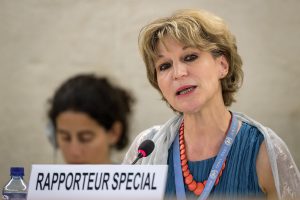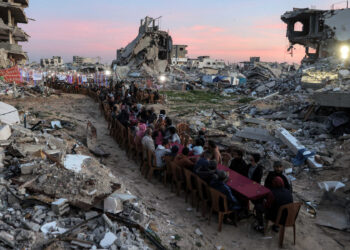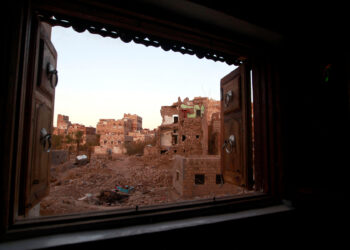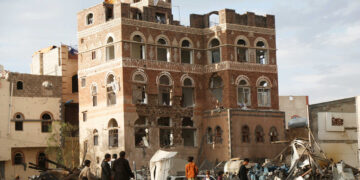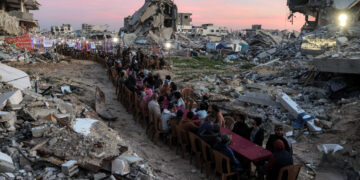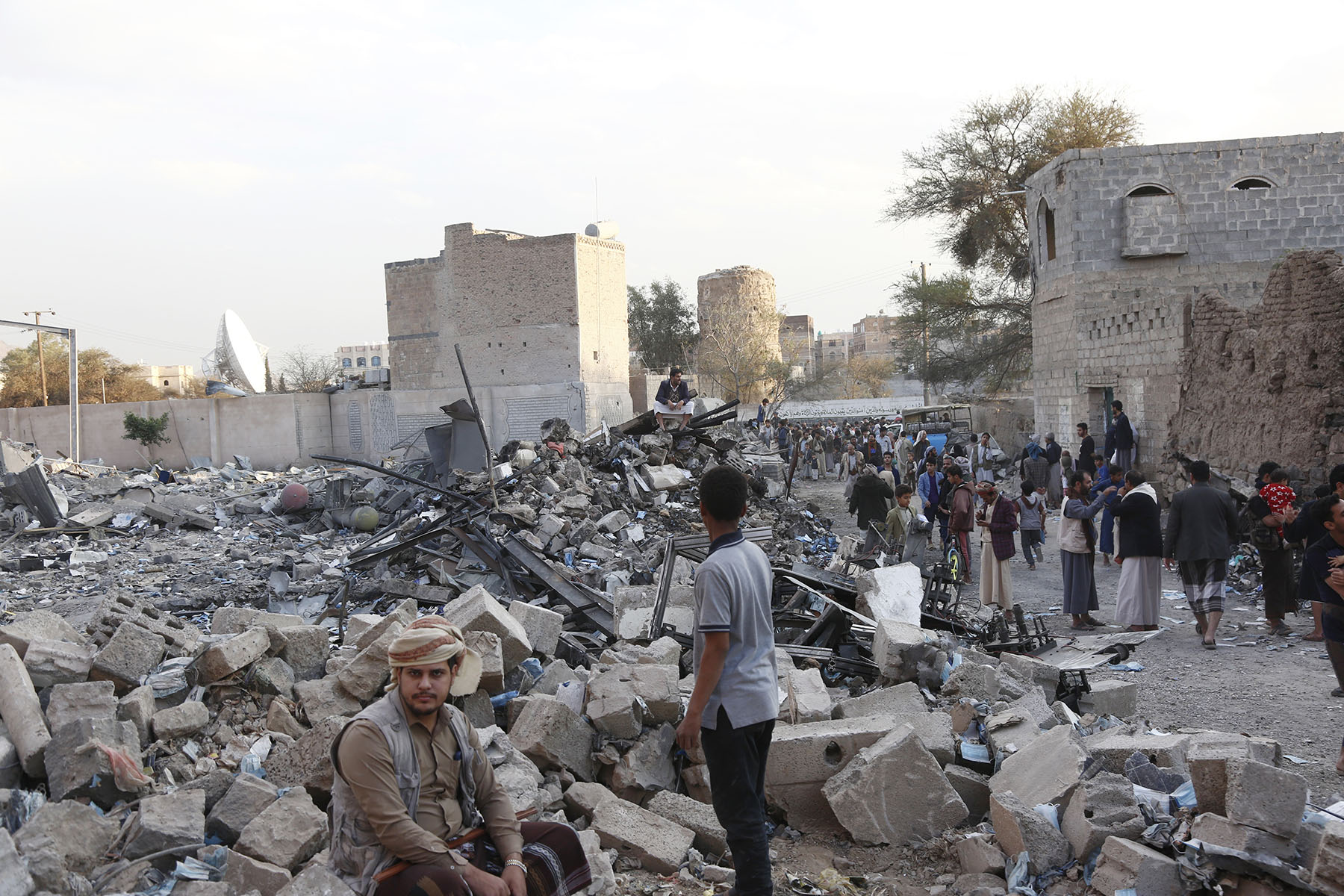Afrah Nasser is a non-resident fellow at the Arab Center Washington DC. She is a recipient of the Committee to Protect Journalists’ International Press Freedom Award and formerly worked as a Yemen researcher at Human Rights Watch.
Last August, my world turned upside down when my mother was diagnosed with cancer. At the time, I was working with a Yemeni colleague on an investigative piece about rising cancer cases in Yemen tied to pollutants from the oil industry. The irony was not lost on me, as media reports had been chronicling how fuel companies in Yemen flagrantly violated environmental protections. Overwhelmed by the news, my ability to write was paralyzed for months. It plunged me into an exhausting and emotionally draining ordeal that was both a medical marathon and a financial whirlwind.
Ten months later, today, I can write not only to recount my mother's courageous battle and eventual triumph over cancer, but to address a broader crisis. This journey through sickness and recovery has reshaped me, leaving indelible scars. I know now, more than ever, the staggering human costs of the collapse of Yemen's health care system.
Years of conflict in Yemen, fueled by both internal and external forces, from the Houthi takeover of Sanaa in September 2014 to the Saudi-led military intervention in 2015, have ravaged nearly every facet of life for the Yemeni people. The most recent data, already outdated from 2021, comes from the United Nations Development Program, which estimated nearly 377,000 deaths due to war's impact—a figure many experts consider conservative. The actual death toll could be significantly higher. For those who perished, death may have been a release. The survivors face dire circumstances, grappling with a destroyed health care system by all parties to the conflict. Currently, out of Yemen's 35 million people, approximately 20 million people urgently require medical assistance. As of February 2023, the World Health Organization reported that 46 percent of Yemen's health facilities were either partially operational or completely nonfunctional, crippled by shortages of staff, funding, electricity, medicine and other basic supplies and equipment. Working in health care in Yemen is dangerous, even deadly. In 2022, at least seven heath workers were killed in attacks on hospitals and other health care facilities, and five others were abducted.
I know now, more than ever, the staggering human costs of the collapse of Yemen's health care, through my mother's own battle with cancer.
- Afrah Nasser
For ordinary Yemenis, the shattered health care system means an almost certain death sentence when faced with serious illness, spanning all socioeconomic classes. Cancer cases are rampant, but cancer care in particular is prohibitively expensive and scarce. Many cancer clinics have been forced to close because of the war, so patients can only find cancer treatment at a few hospitals in cities like Sanaa, Taiz, Aden, Ibb and Hadramout. Yet even these facilities often lack adequate medical resources. Some patients can't even afford the transportation expense to and from the few cancer treatment centers.
On the other hand, for some fortunate Yemenis, the only recourse is seeking medical treatment abroad, usually in Egypt or Jordan, which involves either borrowing substantial sums of money or spending their life savings. The scenes at airports, from Sanaa to Cairo and Amman, are heart-wrenching testimonies to the state's collapse, as desperate Yemenis—children, men and women alike—gather to seek medical care abroad. When I was in Jordan for my mother's medical treatment, I was told by Jordanian friends that during the COVID-19 lockdown, the drop in Yemenis seeking vital medical care in Jordan strained the Jordanian health care sector. For years now, Yemenis have made up a sizable portion of patients in Egyptian and Jordanian hospitals.
The logistical challenges compound the financial ones. Obtaining visas for both patients and their caregivers is fraught with difficulties, and the costs of treatment and living abroad add another layer of hardship. Cancer treatment is a prolonged journey, with both physical and financial strain.

According to an official from Yemen's Ministry of Health, who spoke to me on the condition of anonymity, the number of cancer patients ranges from 25,000 to 30,000 annually. Tragically, nearly 60 percent of these patients die due to a lack of resources, medical tools and services, and the scarcity of medicines at cancer treatment centers. In some cases, some families just take their loved ones home and wait agonizingly for death.
This health crisis has not only been caused by war alone, but can be traced to three major environmental catastrophes that are widely suspected of driving the stark rise in cancer cases: crumbling sewage networks, environmental violations by oil and gas companies, and the rampant use of deadly pesticides.
First, due to widespread neglect by state agencies, Yemen's sewage systems have failed in numerous regions of the country, leading to the contamination of drinking water. This breakdown not only increases cancer risks through exposure to carcinogenic chemicals and heavy metals in water and soil, but also spreads pathogens and disrupts ecosystems. Such conditions may indirectly heighten cancer risks via chronic inflammation and continued exposure to environmental toxins.
Second, the oil industry in Yemen, which has operated without enough regulatory oversight both before the war and throughout the conflict, frequently engages in environmentally destructive practices. Local leaders and former officials have reported that oil pollution has diminished agricultural yields and escalated disease rates, including cancer and kidney disorders, within their communities.
Finally, the unregulated use of internationally prohibited and deadly pesticides has become alarmingly prevalent. In 2023, regions under Houthi control imported about 14.5 million liters of pesticides—an enormous surge from prior years. Beyond the officially imported quantities, the influx of smuggled and banned pesticides exacerbates the health and environmental crisis, posing additional cancer risks to Yemenis.
For ordinary Yemenis, the shattered health care system means an almost certain death sentence when faced with serious illness.
- Afrah Nasser
All parties to Yemen's long and brutal conflict, including the Houthis, Saudi Arabia and the United Arab Emirates, are to blame for the suffering of cancer patients in Yemen caused by the devastation of the country's health care system. They all must take responsibility for its reconstruction, echoing calls from the United Nations Panel of Experts on Yemen. Moreover, the current precarious state of Yemen, stuck in a limbo of no war, but no peace, must end. It's time, finally, for a transition to a lasting peace agreement that includes ways of rebuilding and strengthening Yemen's health care system. Medical services cannot recover while medical workers face threats to their lives.
Beyond the war itself, Yemeni authorities must finally exert tighter control on the import and use of pesticides and the country's oil industry, given their suspected connections to the sharp rise in cancer cases. A larger environmental crisis looms. As Helen Lackner and Abulrahman Al-Eryani wrote in 2020, "The current civil war in Yemen threatens the country as a state, but the lesser-known environmental crisis threatens the very existence of Yemen as a habitable land."
This September marks a decade since the Houthi takeover of Sanaa and the ensuing war by the Saudi-led coalition. Reflecting on the past ten years of destruction and suffering in Yemen, it is hard to fathom the depth of the tragedy. People often ask me, "Where did you disappear, Afrah?" Like so many Yemenis, considering everything that has happened, I have been trying to make sense of what has become of my country.










